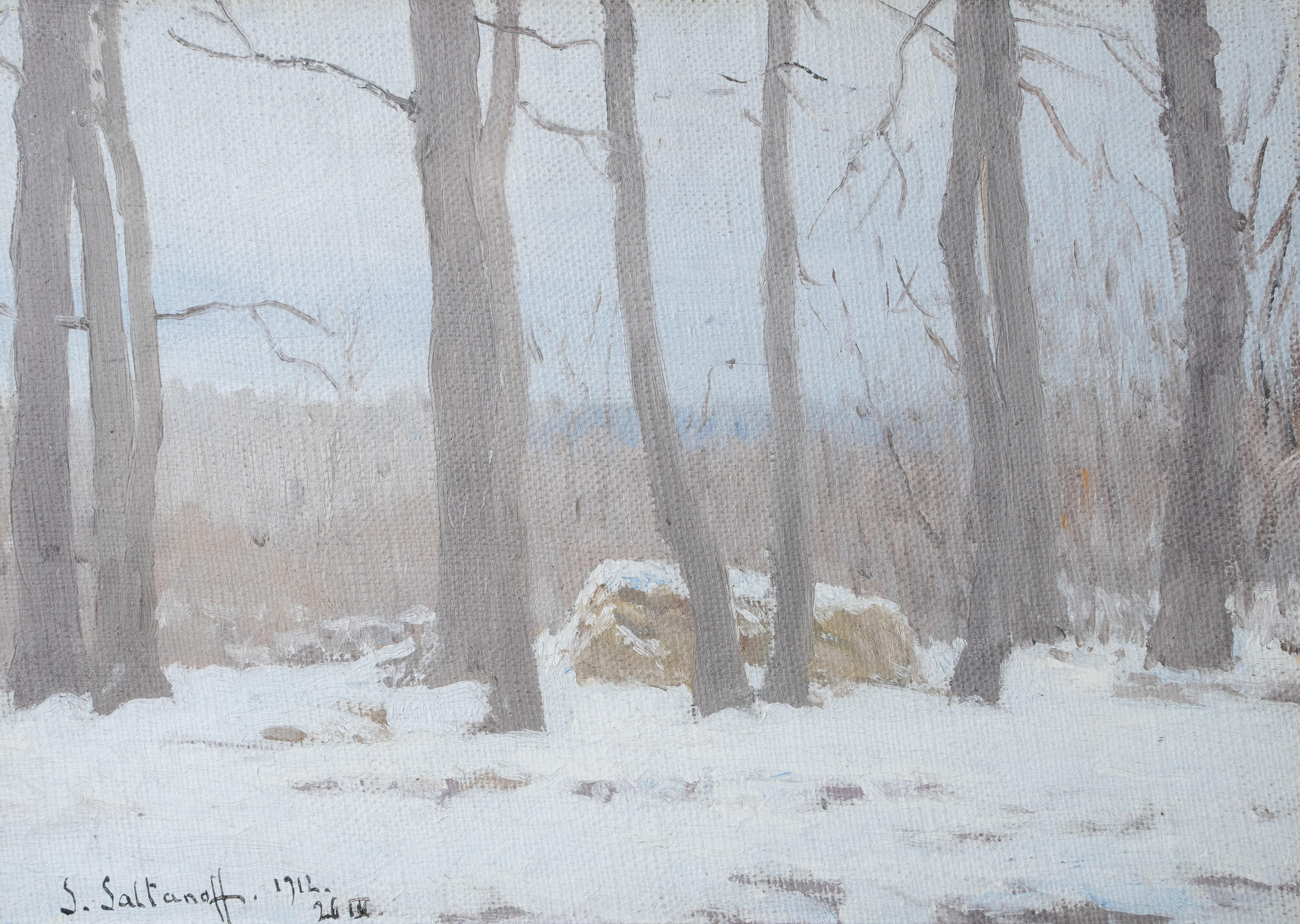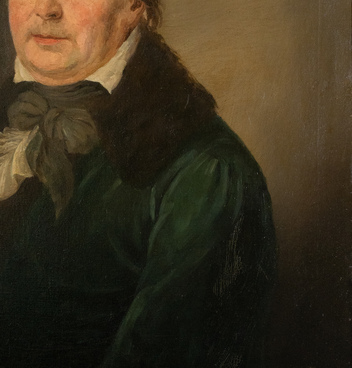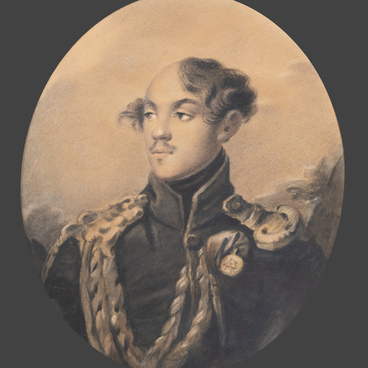“There should be no ceremonies while burying my body; only a wooden coffin, and let anybody willing to take it to the Old Zakaz forest, to the place of the little green stick, by the ravine, take it.”
Those were the instructions that Leo Tolstoy gave his relatives during the last years of his life concerning his burial. Tolstoy’s grave is very simple. Its view in winter is depicted in Sergey Saltanov’s painting: a snow-covered hillock standing among old trees with bare branches. There is neither cross nor monument on the grave, which reflects Leo Tolstoy’s pursuit of austerity and nature, devoid of the excessive and superficial.
In 1941, Tolstoy’s grave was desecrated by Nazi soldiers, who built a German cemetery around it. The house where Tolstoy lived was also badly damaged by fire and havoc. Restoring the memory of the great writer was a matter of honor for the USSR, so in the spring of 1942, the renovated estate was open for visitors yet again.
Sergey Saltanov was a landscape painter, artist and illustrator. He studied at Moscow University, and later at the Académie Julian in Paris where he met Leo Tolstoy’s daughter, Tatiana. Saltanov often visited Yasnaya Polyana where he created a significant part of his works.
Sergey Saltanov’s solo exhibitions were held in 1908 and 1913. The artist’s works were shown at the Tolstoy exhibition, which marked the beginning of the Leo Tolstoy State Museum. Saltanov’s works are kept in the Leo Tolstoy State Museum in Moscow, in the Yasnaya Polyana Museum-Estate, as well as in many private collections in Russia and abroad.
Saltanov’s art was very popular in Moscow at the beginning of the 20thcentury. He was called the “Levitan of Yasnaya Polyana”. His paintings in the Impressionist style are gentle, full of exceptional warmth and harmony, and emanate the writer’s love for the landscapes of Yasnaya Polyana.
The “Saltanov landscape” is tender and moving, built on picturesque semitones and playful glimmers. It is lyrical and poetic, calling to the viewer’s subconscious, their feelings and soul. The Tolstoys called the state of nature captured by the artist, filled with subtle sadness, “Saltanovesque”.

